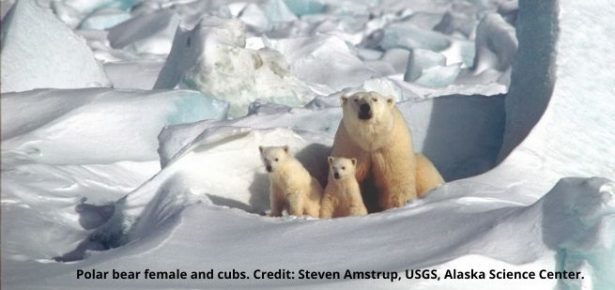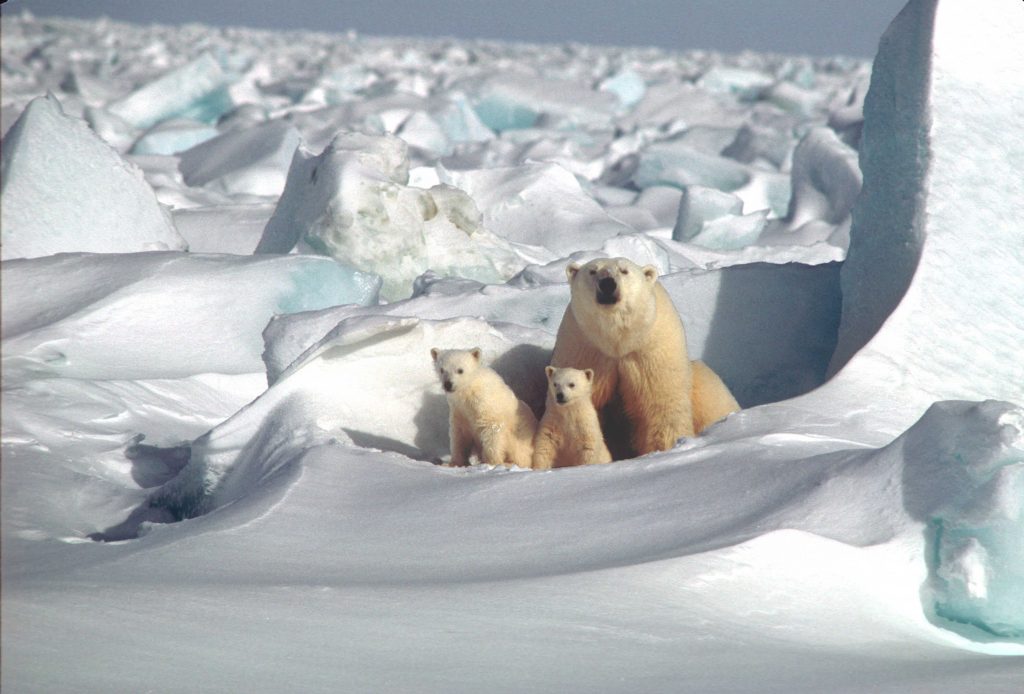
The effects of climate change on ecological processes and biodiversity is globally recognized. The main causes of this change are the anthropogenic gas emissions. If the current level of emission continues, several studies predict an increase of global temperatures from 3.7 to 4.8°C by 2100. Global mean temperature rose about 0.8 °C between 1880-2012, resulting in oceanic warming and sea level rise. Furthermore recent studies suggest that Arctic is warming two to three times faster than temperate regions and polar ecosystems are likely to be the first to undergo rapid alterations in climate with probable impacts on wildlife.
In this global contest, the authors of Chapter 21, Songer, M., Atwood, T. C., Douglas, D. C., Huang, Q., Li, R., Pilfold, N. W., Xu, M. and Durner, G. M. How is climate change affecting polar bears and giant pandas?, of the recently published book Bears of the World, describe the impact of climate change on two conservation icons species: polar bear and giant panda.
Both these species are considered Vulnerable by IUCN Red List of Threatened Species.
Polar bear and giant panda are probably the most distant bear species regarding life histories and behavior and both are likely to be significantly impacted by changes to their habitats due to climate change.
Polar bear is a circumpolar species depending for movements and food resources by the persistence and extension of polar pack ice. Giant panda has a much smaller geographic range than polar bear, lives in temperate montane forests of central China, does not move over large distances and its diet depends on bamboo for 99%. Unfortunately this specific diet suggests high degree of vulnerability to climate change.
Besides the differences in geographic areas and habitats, the scientific community has very different conservation approaches for polar bear and giant panda. Polar bear conservation is based on international collaboration among several countries bordering the Arctic Ocean, which is more complex, but brings to multiple resources shared by many nations working together. Giant panda benefits from a different approach of the Chinese government that is expanding protected areas and investing resources in research and conservation.
However the most important question is: what has been done and should be done to improve the conservation and management of these two charismatic species despite the negative trends in global warming?
One of the most crucial challenge posed by climate change for the conservation of these two bears species is the dynamic changes predicted for their habitats.
Conservation actions can be addressed to protect key habitats but sometimes fail to reach this purpose because habitats and species may shift spatially due to climate change. However to reduce this risk, it is important that adaptive management is based on the best climatic studies verified by robust data.
Polar bear and giant panda provide excellent models for the impact of climate change. However many other threatened species are already under the pressure of global warming and among these other bears species poorly studied are included.
Polar bear and giant panda can be used as a means to stimulate governments and international organizations to generate funds for research and conservation on the potential negative effects of climate change. We hope that governments, agencies, international organizations find a trade-off between the human development and the need of wildlife and their habitats. It is essential to act immediately before it is too late to limit the impacts of climate change on ecosystems and wildlife populations as well as on human health and activities.

References
Songer, M., Atwood, T. C., Douglas, D. C., Huang, Q., Li, R., Pilfold, N. W., Xu, M. and Durner, G. M. (2020). Chapter 21. How is climate change affecting polar bears and giant pandas? In: Penteriani, V. & Melletti, M. (2020). Bears of the World. Ecology, Conservation and Management. Cambridge University Press.
Latest Comments
Have your say!